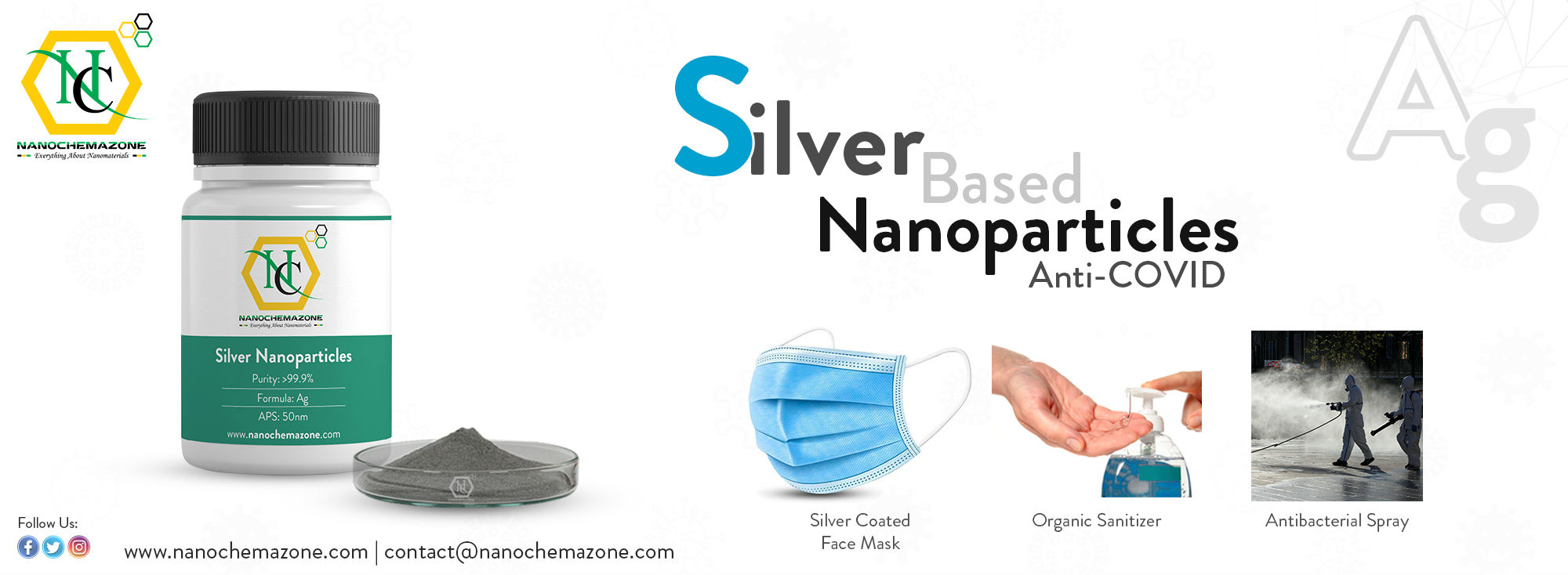Properties and Applications of Silver Nanoparticles
Introduction
Silver nanoparticles have attracted increasing attention for the wide range of applications in biomedicine. Silver nanoparticles, generally smaller than 100 nm and contain 20–15,000 silver atoms, have distinct physical, chemical and biological properties compared to their bulk parent materials. The optical, thermal, and catalytic properties of silver nanoparticles are strongly influenced by their size and shape. Additionally, owning to their broad-spectrum antimicrobial ability, silver nanoparticles have also become the most widely used sterilizing nanomaterials in consuming and medical products, for instance, textiles, food storage bags, refrigerator surfaces, and personal care products.
Properties
- Optical Properties
When silver nanoparticles are exposed to a specific wavelength of light, the oscillating electromagnetic field of the light induces a collective coherent oscillation of the free electrons, which causes a charge separation with respect to the ionic lattice, forming a dipole oscillation along the direction of the electric field of the light. The amplitude of the oscillation reaches maximum at a specific frequency, called surface plasmon resonance (SPR).
The absorption and scattering properties of silver nanoparticles can be changed by controlling the particle size, shape and refractive index near the particle surface. For example, smaller nanoparticles mostly absorb light and have peaks near 400 nm, while larger nanoparticles exhibit increased scattering and have peaks that broaden and shift towards longer wavelengths. Besides, the optical properties of silver nanoparticles can also change when particles aggregate and the conduction electrons near each particle surface become delocalized.
- Antibacterial Effects
The antibacterial effects of silver nanoparticles have been used to control bacterial growth in a variety of applications, including dental work, surgery applications, wounds and burns treatment, and biomedical devices. It is well known that silver ions and silverbased compounds are highly toxic to microorganisms. Introduction of silver nanoparticles into bacterial cells can induce a high degree of structural and morphological changes, which can lead to cell death. Scientists have demonstrated that the antibacterial effect of silver nanoparticles is mostly due to the sustained release of free silver ions from the nanoparticles, which serve as a vehicle for silver ions.
Properties and Applications of Silver Nanoparticles
Applications
- Sensors
Peptide capped silver nanoparticle for colorimetric sensing has been mostly studied in past years, which focus on the nature of the peptide and silver interaction and the effect of the peptide on the formation of the silver nanoparticles. Besides, the efficiency of silver nanoparticles based fluorescent sensors can be very high and overcome the detection limits.
- Optical probes
Silver nanoparticles are widely used as probes for surface-enhanced Raman scattering (SERS) and metal-enhanced fluorescence (MEF). Compared to other noble metal nanoparticles, silver nanoparticles exhibits more advantages for probe, such as higher extinction coefficients, sharper extinction bands, and high field enhancements.
- Antibacterial agents
Silver nanoparticles are most widely used sterilizing nanomaterial in consuming and medical products, for instance, textiles, food storage bags, refrigerator surfaces, and personal care products. It has been proved that the antibacterial effect of silver nanoparticles is due to the sustained release of free silver ions from the nanoparticles.
- Catalyst
Silver nanoparticles have been demonstrated to present catalytic redox properties for biological agents such as dyes, as well as chemical agents such as benzene. The chemical environment of the nanoparticle plays an important role in their catalytic properties. In addition, it is important to know that complicated catalysis takes place by adsorption of the reactant species to the catalytic substrate. When polymers, complex ligands, or surfactants are used as the stabilizer or to prevent coalescence of the nanoparticles, the catalytic ability is usually decreased due to reduced adsorption ability. In general, silver nanoparticles are mostly used with titanium dioxide as the catalyst for chemical reactions.




